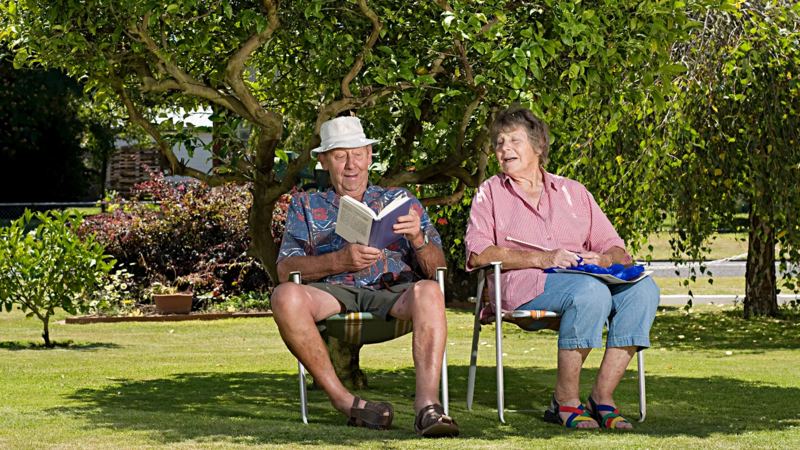What does hand grip strength indicate and how can it be improved?

Published: 11.05.2025 - 16:52
Despite many technological advances, one of the best methods for assessing muscle strength and quality is simply sitting in a chair and squeezing a tennis ball.
That's the view of Joshua Davidson, a strength and conditioning researcher at the University of Derby who studies handgrip strength, which is considered one of the most reliable signs of human health.
When testing hand grip strength in clinical studies, scientists often use a hand dynamometer, a device that you squeeze as hard as you can, to measure the force produced by the muscles in your hand and forearm.
Now several companies are trying to move the dynamometer out of the clinic and into the home, combining easy-to-use devices with mobile apps that let anyone measure their grip strength.
But you can still get a good idea by doing a simple "squeeze test" with a tennis or stress ball, according to Davidson.
“All you need is any object that you can grasp and squeeze with your hand and deform without causing pain or discomfort,” he says.
"Being able to squeeze an object like a tennis ball maximally for 15-30 seconds is a good standard to aim for."
Making note of how long you can squeeze can help you track your grip strength over time.
As Mark Peterson, Ph.D., professor of physical therapy and rehabilitation at the University of Michigan, points out, having weak handgrip strength alone doesn't have much of a direct impact on your day-to-day life beyond making it a bit more difficult to open cans or jars.
But researchers are increasingly using grip strength as a proxy for overall musculoskeletal strength in the body.
It can reflect whether a person is active enough or too sedentary and may indicate a risk of frailty.

This condition first came to public attention with a remarkable study of nearly 140,000 adults in high-, middle-, and low-income countries, which found that grip strength was a better predictor of premature death than other, more obvious indicators, such as blood pressure.
Other research has found that an individual's grip strength may indicate their likelihood of living past the age of 100.
One study measured the handgrip strength of volunteers between 1965 and 1968 when they were 56 to 68 years old and tracked their survival rates for the next 44 years. Those who reached age 100 were 2.5 times more likely to have a handgrip strength score in the top third than those who died before age 79.
Your grip strength, and therefore your overall muscle strength, is a combination of your diet, physical activity and whether you have any underlying diseases, says Darryl Leong of McMaster University in Canada.
“That's why it's associated with so many health outcomes,” he says.
A study using the dynamometer test found that squeeze strength scores below 25.5 kilograms for men and 18 kilograms for women indicate a risk of sarcopenia, a decrease in muscle mass and strength with age and an increased likelihood of falls and fractures.
Guillaume Paré from McMaster University says that even a simple handshake can tell a lot, and that the strength of the handshake is a sign of whether a person has sarcopenia.
“A weaker handshake, where the fingers have difficulty closing completely around the hand or the hand muscles are weakened, is a warning sign,” he says.
But the links between grip strength and longevity go far beyond physical abilities.
Research shows that muscle is an important element in the metabolic system, acting as a reservoir that can absorb excess blood glucose and help prevent the development of insulin resistance.
Therefore, a weaker squeeze may indicate that a person is more prone to a multitude of problems linked to metabolic dysfunction, from type 2 diabetes to low bone mineral density, malnutrition, cognitive impairment, and depression.
In 2022, Peterson led a study that assessed the clenching strength of 1,275 men and women and compared those results with an analysis of their DNA.
The team found that those with lower grip strength scores showed signs of accelerated aging.
This isn’t surprising to Paré, who says he considers squeezing power to be a key indicator of both disease resilience and the likelihood of recovery from chronic illness.
For example, studies of cancer patients show that those with weaker grip strength are more likely to experience sudden weight loss or cachexia (excessive loss of muscle or fat despite normal nutrition) and therefore have poorer survival outcomes.
“This means that when we get a disease, our ability to fight it is limited,” Peterson says.
“For example, people with lower respiratory drive have a much higher risk of dying from pneumonia, which makes sense when we consider the importance of good muscle health for properly clearing phlegm from the airways.”

Grip strength is not something that only needs to be considered in older ages.
There are even studies that show that the average clenching force of a population correlates with the number of Olympic medals a country wins.
Young people with weaker grip strength may be more prone to health problems at an earlier age, Paré says.
A study in Brazil showed that teens who spent more time in front of their screens on their phones or other devices had worse cognitive performance.
“There is data supporting the association of low grip strength with poor metabolic health, even in young adults,” Paré says.
HOW CAN YOU INCREASE YOUR GRIP POWER?It is possible to improve the clamping force.
Davidson says this is something you can work on regardless of your age.
He recommends the tennis ball test to keep the hand and forearm muscles at maximum strength for as long as possible. With practice, steady improvements can be made over time.
Leong also recommends getting more physical activity in general and working your upper and lower body muscles. If you do this, your clench strength will increase accordingly, he says.
For older adults, Leong suggests trying a chair sit-stand-walk test with timing.
"Here, a stopwatch is used to record the time it takes for a person to get up from a chair, walk three metres, return and sit down. This tests the strength and mobility of the legs and can help you improve your overall muscle strength."
General resistance exercises to build muscle mass and maintain bone mineral density will improve grip strength, Davidson says.
"As we age, we need to engage in regular physical activity. You can work out at home, using special equipment or just using things you already have at home. Two to three sets of one-arm wrist curls with 10 to 20 repetitions are a good exercise to start with. If you have a kettlebell at home, you can also try bicep curls."
Open-close squeeze exercises and wrist curls with palms facing up and down can also help improve your grip strength.
Cumhuriyet





